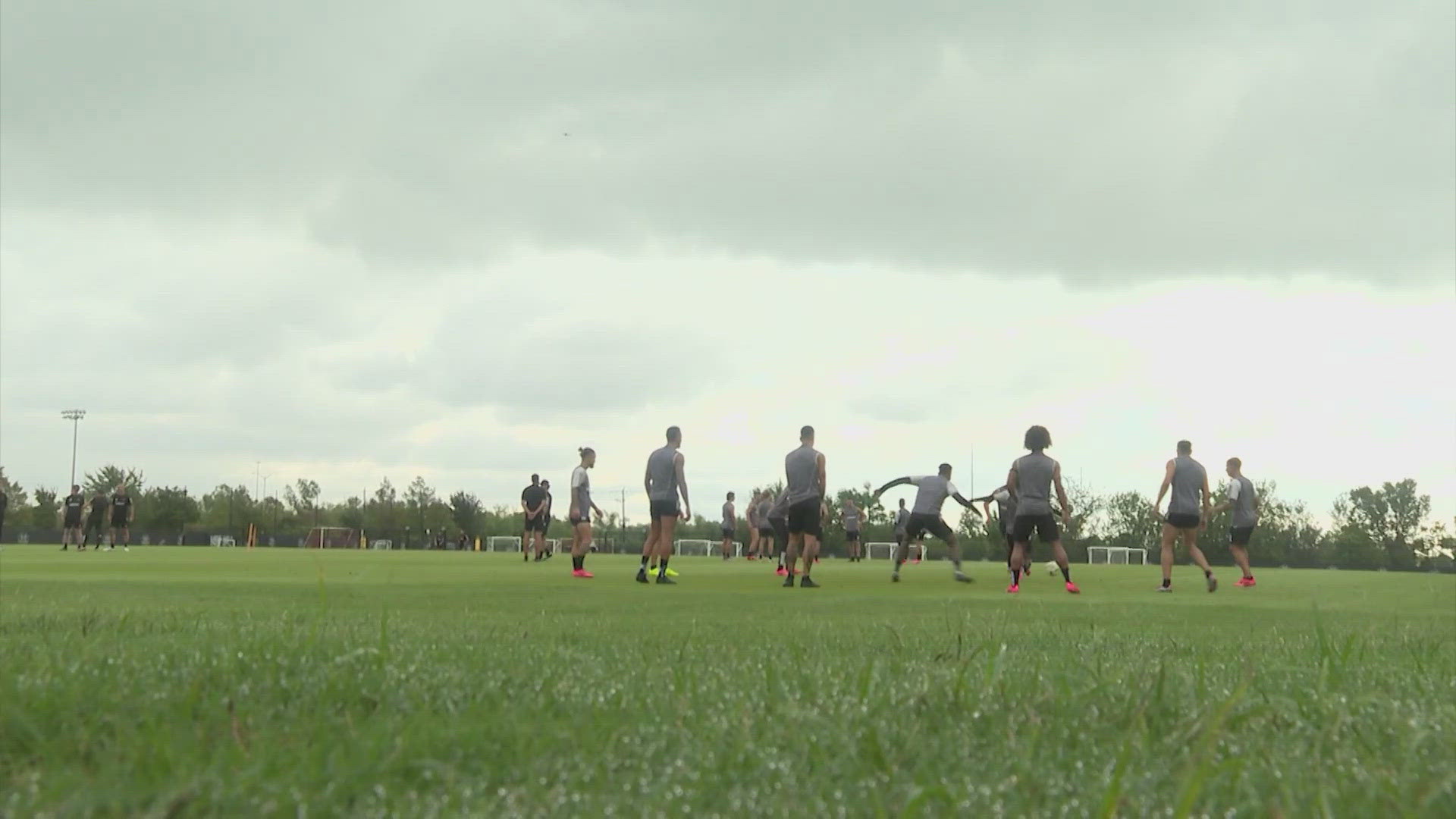HOUSTON — Globally, it’s known as the beautiful game and in some countries it’s like a religion.
Soccer -- a game that you don’t need a lot to play. You can take two trees and call it a goal. You can make a ball out of paper. An international game that’s spoken in many languages.
“Futbol.”
“Putebol.”
"Piłka nożna."
“Soccer.”
But there is one universal dialect that’s spoken on the pitch.
“We all speak soccer,” said Houston Dynamo head coach Ben Olsen.
The players call it football language. If you understand each other, you don’t need to speak.
"There's enough hand gestures and curse words," Olson said. "It can get heated, too, and that's also communication and that's OK."
Diversity is the heartbeat of the Houston Dynamo locker room and sometimes this means adapting to your multilingual teammates in order to better communicate on the pitch.
"I've learned a lot of on-field words that are very useful, like izquierda, derecha, vamos, dale," said Dynamo midfielder Griffin Dorsey. "But a lot of it is body language and facial expressions. It's funny how far that can get you with somebody that you can't speak the same language with or have a full-blown conversation with."
Body language can only get you so far. The players make intentional efforts to learn each other's languages, even if it's just to say hello.
"I'm always practicing my English, saying hello like 'What's up, bro' and 'What happening, bro,” said Dynamo midfielder Adalberto “Coco” Carrasquilla.
It's about more than just communication on the field. It's about building camaraderie.
"Those small phrases and interactions are so important because you show that you're interested in at least saying hello and being respectful,” Carrasquilla added.
The Houston Dynamo spends most of its time on the training grounds, but once practice is over, one of the cool things the team does periodically is offer the players English classes so that they can communicate better on the pitch.
"It's wonderful that we offer Spanish speakers English classes and try to integrate them into American culture," Olsen said. "But it's equally important that I learn Spanish and that our English-speaking players learn their cultures. It's a two-way street."
In the middle of games, players find a way to bridge the language gap in order to communicate.
"When I know the ball is coming [a player’s] way and I don't want him to touch, I say 'No toque' and he understands,” said Dynamo midfielder Amine Bassi. "For pressing, I say 'Ya, ya, ya.' It's little words, but it helps a lot."
"If you know Hector, you don't need to say to him 'Hey, hey, hey give me the ball.' He will find you. Just be in the right place,” Dynamo midfielder Sebastian Kowalczyk said.
In soccer, the game builds up in the midfield and that’s where the Dynamo have the one player who connects all the dots. The midfielder Artur, who speaks Spanish, Portuguese and English.
"To be honest, it helps a lot," he said. "It makes everything easier for me and for my teammates, as well, because a lot of times I have to translate for them and I can see how difficult it is, specially in the game when things happen so fast," Artur said.
The Dynamo's ability to unite across languages is a reflection of what makes soccer the world's game and there's always a game around the corner, which is a great way to integrate into any society.

